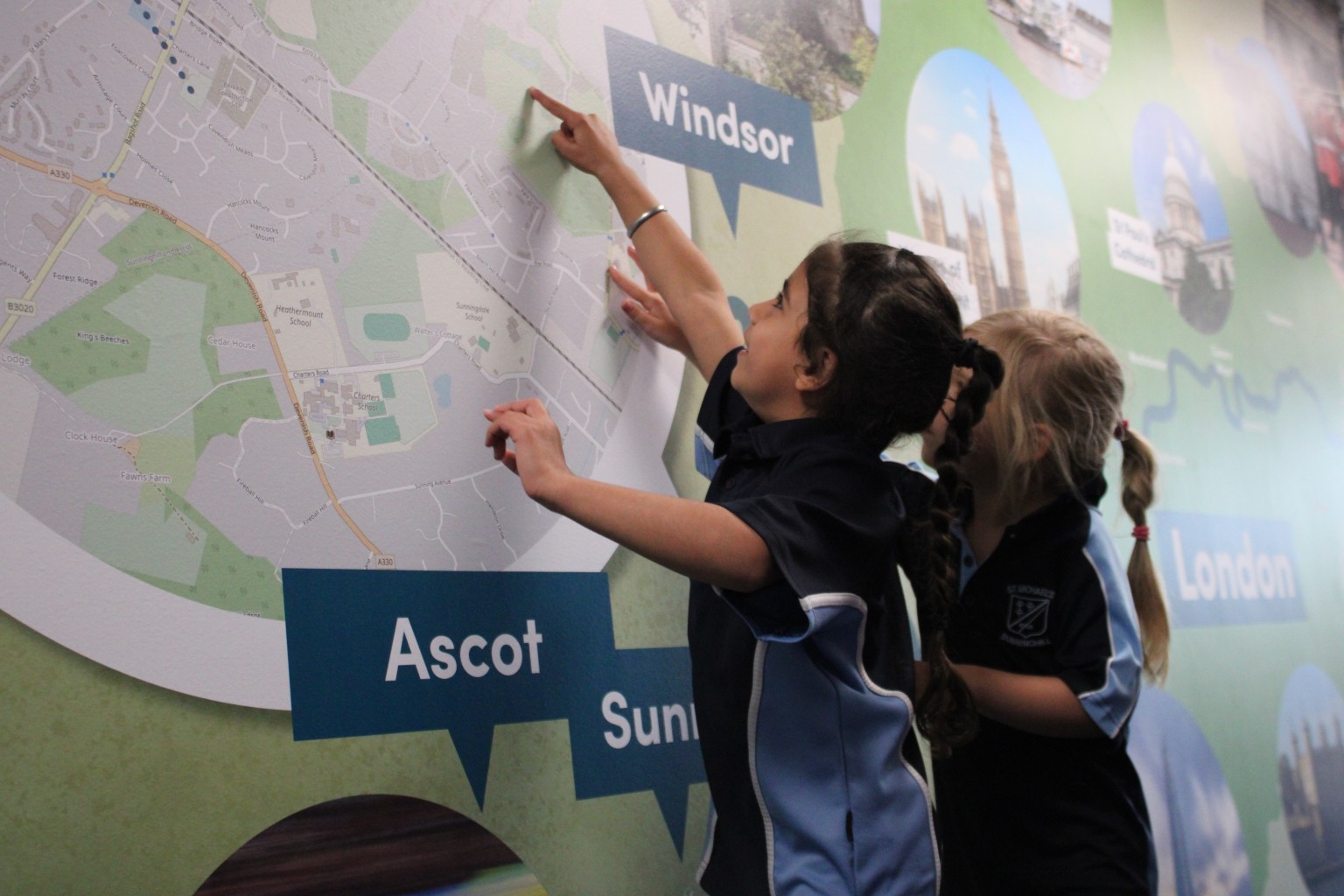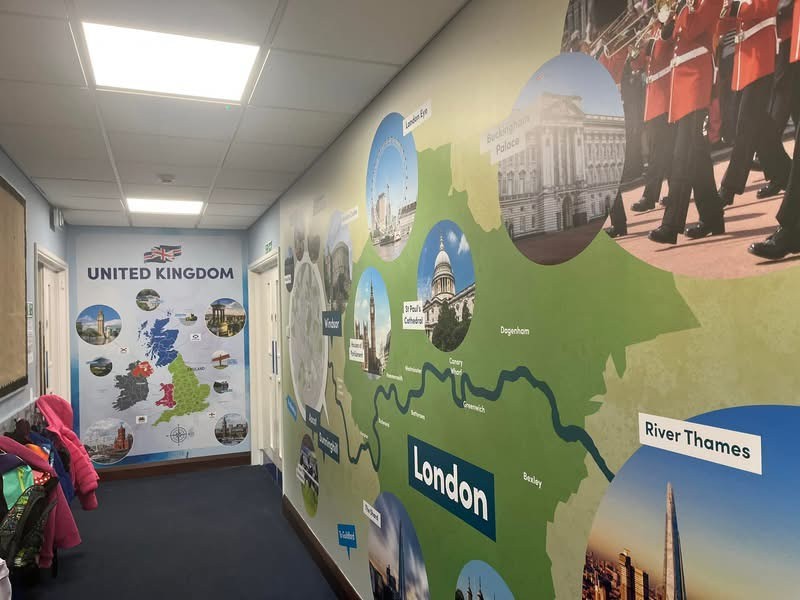Intent
At St Michael’s, through our Geography curriculum, we aim to inspire pupils to become curious and explorative thinkers with a diverse knowledge of the world: to think like a geographer. We want pupils to develop the confidence to question and observe places, measure and record necessary data in various ways, and analyse and present their findings. Through our curriculum, we aim to build an awareness of how Geography shapes our lives at multiple scales and over time. We hope to encourage pupils to become kind, respectful, resourceful citizens who will have the skills to contribute to and improve the world around them.
Our curriculum encourages:
· A strong focus on developing both geographical skills and knowledge.
· Critical thinking, with the ability to ask perceptive questions and explain and analyse evidence.
· The development of fieldwork skills across each year group.
· A deep interest and knowledge of pupils’ locality and how it differs from other areas of the world.
· A growing understanding of geographical terms and vocabulary.
Implementation
The National curriculum organises the Geography attainment targets under four subheadings or strands:
· Locational knowledge
· Place knowledge
· Human and physical geography
· Geographical skills and fieldwork
The Geography curriculum is designed to demonstrate the progression of skills and knowledge within these four strands across each year group. Our Progression of Knowledge and Skills shows the skills taught within each year group and how these develop to ensure that National Curriculum attainment targets are securely met by the end of each key stage.
Following a spiral curriculum, essential knowledge and skills are revisited with increasing complexity, allowing pupils to revise and build on their previous learning. Locational knowledge, in particular, will be reviewed in each unit to coincide with our belief that this will consolidate children’s understanding of key concepts, such as scale and place, in Geography.
Cross-curricular links are developed throughout each unit, allowing children to make connections and apply their geographical skills to other areas of learning. The enquiry questions form the basis of the Key Stage 1 and 2 units, meaning that pupils gain a solid understanding of geographical knowledge and skills by applying them to answer enquiry questions. These questions are open-ended, enabling them to be purposeful and engage pupils in generating a real change. In answering the questions, our children learn how to collect, interpret and present data using geographical methodologies and make informed decisions by applying their geographical knowledge.
Each unit contains elements of geographical skills and fieldwork to ensure that fieldwork skills are practised as often as possible. Our enquiry cycle maps out the fieldwork process of question, observe, measure, record, and present, to reflect the elements of the National Curriculum. This ensures children will learn how to decide on an area of enquiry, plan to measure data using a range of methods, capture the data and present it to a range of appropriate stakeholders in various formats.
Fieldwork includes smaller opportunities within the school grounds to larger-scale visits to investigate physical and human features. Developing fieldwork skills within the school environment and revisiting them in multiple units enables pupils to consolidate their understanding of various methods. It also gives children the confidence to evaluate methodologies without always having to leave the school grounds and do so within the confines of a familiar place. This makes fieldwork regular and accessible while giving children a thorough understanding of their locality, providing a solid foundation when comparing it with other places.
Lessons incorporate various teaching strategies from independent tasks to paired and group work, including practical hands-on, computer-based and collaborative tasks. This variety means that lessons are engaging and appeal to those with a variety of learning styles. When required, content is adapted to ensure that all pupils can access the key learning, as well as providing opportunities to stretch pupils’ learning. Knowledge organisers for each unit support pupils in building a foundation of factual knowledge through encouraging recall of key facts and vocabulary.
Impact
Our enquiry-based approach to learning allows teachers to assess children against the National Curriculum expectations. The impact is constantly monitored through both formative and summative assessment opportunities.
Each lesson provides teachers with opportunities to assess pupils against the learning objectives. Furthermore, each topic has a unit quiz and knowledge catcher, which can be used at the start or end of the unit to assess children’s understanding. Opportunities for children to present their findings using their geographical skills also form part of the assessment process in each topic covered.
As a result of implementing our Geography Curriculum, our pupils should leave school equipped with a range of skills and knowledge to enable them to study Geography with confidence at Key Stage 3 and beyond. We hope to shape children into curious and inspired geographers with a respect and appreciation for the world around them, alongside an understanding of the interconnection between the human and the physical.
The expected impact of our curriculum is that children will be able to:
· Compare and contrast human and physical features to describe and understand similarities and differences between various places in the UK, Europe and the Americas.
· Name, locate and understand where and why the physical elements of our world are located and how they interact, including processes over time relating to climate, biomes, natural disasters and the water cycle.
· Understand how humans use the land for economic and trading purposes, including how the distribution of natural resources has shaped this.
· Develop an appreciation for how humans are impacted by and have evolved around the physical geography surrounding them and how humans have had an impact on the environment, both positive and negative.
· Develop a sense of location and place around the UK and some areas of the wider world using the eight-points of a compass, four and six-figure grid references, symbols and keys on maps, globes, atlases, aerial photographs and digital mapping.
· Identify and understand how various elements of our globe create positioning, including latitude, longitude, the hemispheres, the tropics and how time zones work, including night and day.
· Present and answer their own geographical enquiries using planned and specifically chosen methodologies, collected data and digital technologies.
· Meet the end of key stage expectations outlined in the National curriculum for Geography.
The impact of our geography curriculum is monitored through:
- Formative assessment on a lesson-by-lesson basis
- An end of topic ‘knowledge catcher’ for children to show what they have learnt, including new vocabulary
- Pupil and teacher voice
- Learning walks and book looks
- Summative assessment is recorded on OTrack at the end of the summer term
· At the end of a unit of work, children will complete a self-reflection to share what they have learnt, how they have been successful and what they need to improve upon.




